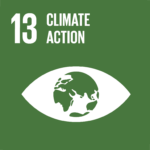As the COP29 climate summit conclude, $300 billion COP29 climate deal as insufficient.
Baku, Azerbaijan — As the COP29 climate summit concludes with a headline-grabbing pledge of $1.3 trillion in climate finance, the reality behind the numbers paints a far less optimistic picture. Despite lofty promises, only a fraction of the pledged funds will address the pressing needs of developing nations struggling to combat climate change and achieve sustainable development.
RELEVANT SUSTAINABLE GOALS




The Harsh Truth Behind the $1.3 Trillion
While the headline figure seems impressive, only $300 billion of the total will be provided as grants and low-interest loans from developed nations—the financial forms most needed by the Global South. The remaining funds are expected to come from a mix of private investments and loans, which often come with strings attached, leaving vulnerable countries grappling with mounting debt.
This comes as developing nations face a $4 trillion annual investment gap in meeting Sustainable Development Goals (SDGs), according to recent estimates. Without adequate funding, the foundations of global sustainable development risk collapsing.
This energy transition alone—a cornerstone of global efforts to combat climate change—requires $2.2 trillion annually in investment. Yet financial flows remain woefully insufficient to meet this critical need. Meanwhile, the debt burdens of developing countries are spiraling out of control, with annual debt service costs projected to reach $40 billion between 2023 and 2025, threatening economic stability and derailing development.
Even Official Development Assistance (ODA), which reached a record $211 billion in 2022, barely scratches the surface of what is needed. Private sector investments, while growing, remain far too limited to close the gap
Urgent Need for Systemic Reform
Experts agree that the international financial system must undergo immediate and radical reform to address these challenges. Without transformative changes, the system cannot adequately support SDG financing or meet the growing demands of the climate crisis.
Key Areas for Reform:
- Scaling Grants and Concessional Loans: Substantially increase public financing from developed nations in forms that do not exacerbate debt.
- Private Sector Engagement: Create mechanisms to incentivize large-scale private investments in climate-positive and nature-based solutions.
- Debt Relief: Implement debt restructuring or forgiveness programs to free up resources for climate and development priorities.
- Project Development: Support the origination of climate-resilient and nature-preserving projects to attract financial flows.
The Stakes Could Not Be Higher
Failure to address these funding shortfalls risks derailing the global efforts to achieve SDGs, combat climate change, and ensure a habitable planet. The $1.3 trillion pledge, as it stands, offers little solace to the developing nations facing mounting climate impacts and financial instability.
“The current financial commitments fall drastically short of what is needed,” noted a leading economist at the summit. “We must significantly increase investments from both public and private sectors and ensure systemic reforms to direct these funds effectively. The well-being of future generations depends on the actions we take today.”
Lead image courtesy of Maxim Shemetov via Reuters (Brazil’s Minister of Environment Marina Silva and Ana Toni, Brazil’s National Secretary for Climate Change attend a press conference at the COP29 United Nations Climate Change Conference, in Baku, Azerbaijan November 23, 2024).
You may also be interested in :
COP29’s Uphill Battle Against Climate Finance Fatigue: Will This Be A Turning Point?




